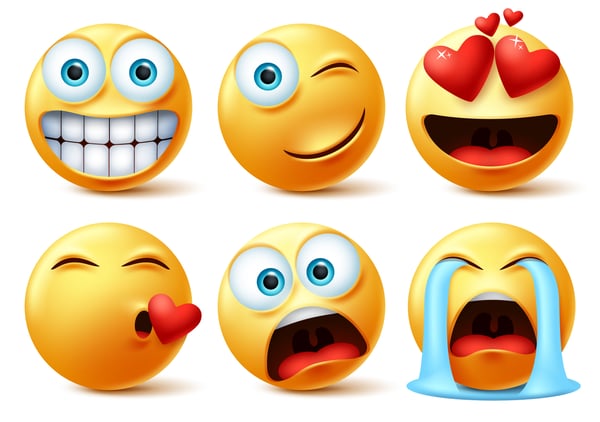Missouri Marketing Resource Blog

Don’t Be Boring: An Exercise in Marketing with Emotion

Experts estimate that most Americans are exposed to around 4,000 to 10,000 ads each day. As a defense mechanism, we naturally screen information for relevancy…and our brains select which messages we engage with and which we ignore. The goal with successful marketing then is to position your brand as one of the messages, in midst of an ocean of options, that we choose to give our attention. We do that with emotion. Here’s how.
Emotion is the most powerful motivator on the planet. You can present facts all day long, and yet people won't respond to logic like they will to emotion. As a marketer, your job is to tap into the emotional aspects behind why someone buys from you. Tell that story, and you'll set your campaign up for success. Avoid BORING like the plague. In the words of the famous Mae West, "I'd rather be looked over, than overlooked." To get there, here are a two key points to remember:
1. Facts are boring
“Bueller? Bueller? Bueller,” the quintessential monotone voice of Ben Steiner’s character states in the cult-classic movie Ferris Bueller’s Day Off, a voice that embodies the meaning of the word boring. This scene then shows a classroom full of nearly comatose students and their economic teacher, the aforementioned character, explaining the topic of the Smoot-Hawley Tariff of 1930. Stein’s naturally monotone way of speaking could put even the most dedicated student to sleep. It is this monotone, boring presentation that you as a modern business most want to avoid. While you don’t have to go too extreme in the other direction, presenting just the facts and only the facts can be extremely boring, a lesson which we all learned from this fictional professor who still embodies the meaning of the word dull.
2. Cliches are boring
In addition to monotone and dull, you also want to avoid overdone or cliché. This too is boring! Consider the phrase “for all your automotive needs” as one example. Ugh. <eye roll> Overdone and cliché phrasing is not the answer. So, what is not dull and boring or too cliché? How do you reach and engage customers? The secret to hooking your clients or customers with memorable messaging is to use emotion.
What's NOT Boring? Emotion!
The following are a few points showing the way emotion can drive buying habits:
- Consumers buy a product for what it can do for them. They don’t buy something simply because it’s at your store or on sale. If it happens to be the sale, all the better - that certainly helps justify the purchase later. But it isn't want creates a loyal customer base. Emotion sells, and emotion wins out over logic almost every time. Consider Lesson #4 from Chuck Mefford's (Brandsformation) book entitled, "Tickle the Toes, Touch the Heart, Change the Mind." Lesson #4 says, "People remember stories, but they don't remember facts and numbers. Stories get into the heart in a way that facts and numbers never will." We couldn't agree more.
- Know your 'why.' Emotional triggers shouldn’t only be about WHAT people buy but the WHY behind the purchase. You want to point your potential customers toward an emotional connection that will lead to a purchase. This takes a focused strategy that creates the desired emotional connection between your product and/or service and your customers. An old rule of sales that still rings true: people buy emotionally, they justify intellectually. This rule is a foundational truth in marketing as well. Your job is to help consumers make the connection between their head and their heart. The following exercise is a way to help you drill down to finding your business' all-important "why."

An Exercise in Getting to the Emotion Behind Your Product or Service
Now that you have seen the way consumers purchase items based on emotion, it’s important to learn how to make that work for you. Grab a pen and paper and begin writing the answers to each question below. Resist the temptation to rush...take time to think through your answers. The goal is to dig deeper - burrow past superficial responses and get to the heart of why people purchase from you. Let's get started:
- Step 1: Write down the following: "People buy from me because...? Answer this question thoroughly. Take time to list the features and benefits of your products or service. Once you've finished...move on to Step 2.
- Step 2: Write down the following: "And that's important to them because...?" Look back over your answers to question number 1 and drill down deeper. Write out why your products and services are important to a consumer. Don't rush or be glib, but focus on what problems your customers are trying to solve by coming to you. Once you're finished, move to step 3.
- Step 3: Write down the following words again: "And that's important to them because...?" Then, go for gold. Reach for the “why” behind their purchasing habits. This step uncovers what’s really important to your target audience. If you need to again repeat step #3 one more time, then do it. When you hit pay dirt, you'll know it. You'll be looking at the root of what is motivating people to buy from you...and that gives you the words for telling your story in a new way.
And THAT...is the definition of branding.

Let Us Help You
Don’t hesitate to contact us if you don’t know how to utilize emotion in your marketing strategy or aren’t sure how to figure out what emotion is most important to your customers in the first place. Our creative team, made up of award-winning creative writers, are experts at drilling down with you. We know how to sift past the boring stuff and find the hidden gems that will take your marketing from simply "running ads" to a results-oriented marketing strategy.

